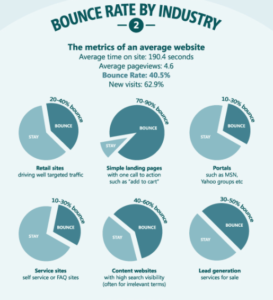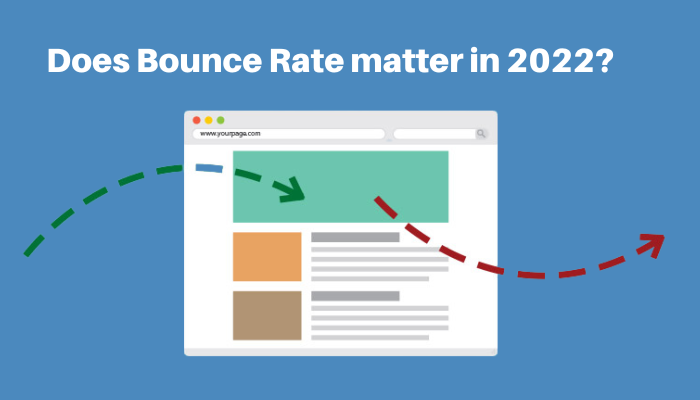SEO is a complex and ever-changing field, and there are many misconceptions about what factors influence keyword rankings. One of the most common misunderstandings is that bounce rate still plays a significant role in search engine optimization. With the introduction of IP blocking apps and privacy settings on mobiles, bounce rate has now become a lesser important metric to track.
While a high bounce rate may be indicative of a poorly designed website, it is not a direct ranking factor. This means that you can have a high bounce rate and still rank well for your target keywords.
Conversely, you can have a low bounce rate and rank poorly. So, if you’re focusing on reducing your bounce rate in an effort to improve your SEO, you may want to revaluate your strategy. In the end, SEO is about much more than just bounce rate. While it’s important to have a well-designed website, there are dozens of other factors that contribute to SEO success.
If you want to rank well in 2022, you need to focus on a holistic SEO approach that takes into account all of the latest ranking factors.
What is a bounce rate
A “bounce” happens when a user visits a webpage and immediately leaves by clicking the back button or typing in a new URL. On Google Analytics, the bounce rate is the percentage of users who visit a site and bounce right away. So, if the Bounce Rate is 90%, it means that 90 out of 100 users left the page without engaging further on the website
There are several reasons why users might bounce from a website, including poor design, slow loading times, or irrelevant content. A high Bounce Rate can be damaging to a website’s reputation and ranking, so it’s important to try to reduce it. One way to do this is to make sure that your website is designed well and relevant to your target audience. You should also ensure that your pages load quickly, as slow loading times are one of the main reasons why users bounce. Finally, you should regularly analyse your Bounce Rate and compare it to your goals to see if there are any improvements that need to be made.

Problems with bounce rate calculation in 2022
With advanced ad and IP blocking software’s we can only measure a user’s retention rate when they open another page on the same website environment. That means you have to click onto an additional webpage in order for our script and analytics code from google Analytics determine how long someone has been browsing through these pages, but it won’t pick up any activity outside those moments where there was direct contact with content or features on your site – like mouse movements etc.. This lack of functionality makes tracking users’ behaviour difficult if not impossible to track because all this information would need storing within variables inputted by visitors themselves.
Can bounce rate be still used and how?
The answer is yes, bounce rate can be a good metric to determine if the user journey has been optimised. Defining your website’s navigation and how users navigate through it will help you optimise for better conversion rates by getting rid of dead ends or confusing sections on your site that do not lead anywhere. This means taking into consideration not just what content viewers see but also where they click when visiting certain pages so as best cater those areas specifically instead of having everything available at all times which would make browsing inefficient.
If you’ve supplied the right content, this is a win. Landing pages also have higher bounce rates because of people getting quicker results and wanting immediate return tends to mean that attention span/patience are shorter–and second-ly many landing pages don’t move users through an entire conversion process including other related product blocks or offers along their journey on these webpages which makes it natural for them do “bounce” back after completing one task at hand without necessarily being converted into buyers while they’re there browsing.
If bounce rate is around the 30%-50% mark, then you may not have any problems; however if this number exceeds 75%, there could be some serious issues on hand! It’s important to monitor these metrics closely because they can signal potential bugs in coding or poor content that need fixing right away before things get out of control.

Image source: Crazyegg.com
Bounce rate alternatives
As Google moves towards sunsetting their widely used analytics product in summer of 2023, the search engine has introduced a new system that will take over for it. One stat missing from this? You guessed it: bounce rate! While still present on other platforms like Bing and Facebook Ads Manager (among others), we can see why they would want to cut off any connection between SEO and what’s considered by many professionals an ugly number. However these are the alternative metrics to look for:
· Engagement Rates
· Engaged Sessions
· Page Exits
· Time on site
· Page flow
· Traffic sources
Our team of digital marketing experts are here to answer any questions you might have with your website optimisation. Whether it’s about setting up the perfect GA4 installation, or understanding what traffic means for this month’s numbers – we’re always ready! For more information on how we can assist in making things happen, contact us today.






